Within and beyond The New Yorker, introspection and metaphor now steer Steinberg and his cast of characters, in an art still often grounded in graphic epitome and redacted cartoon conventions but increasingly allusive. His art for exhibition, though related to imagery found in The New Yorker, ventured into more complex visual and sociological constructs as well as internal issues of art and art-making.

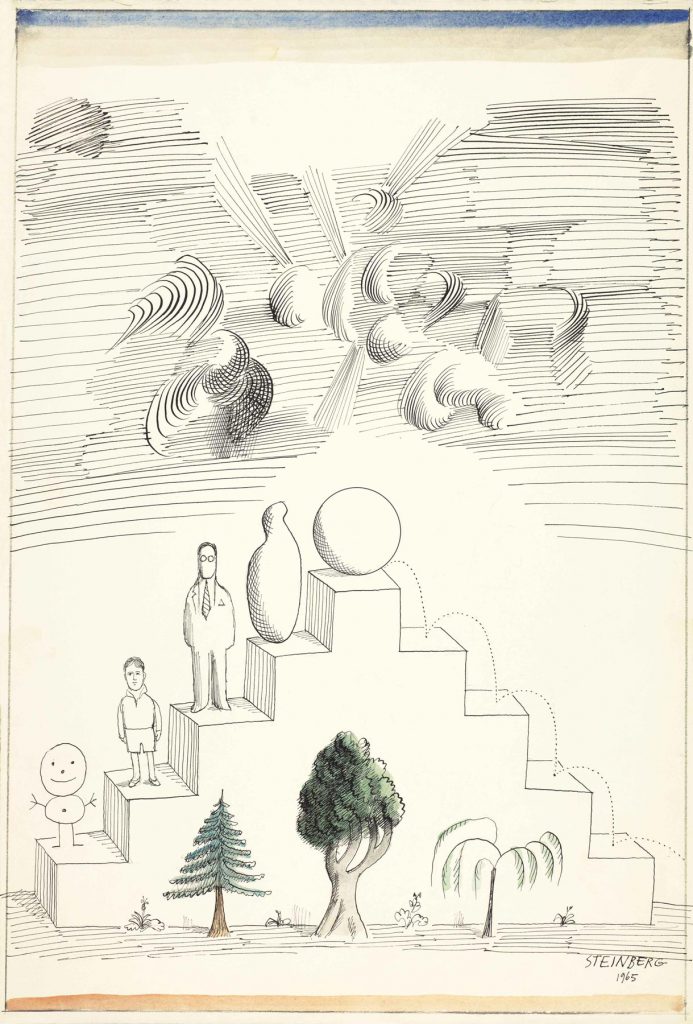
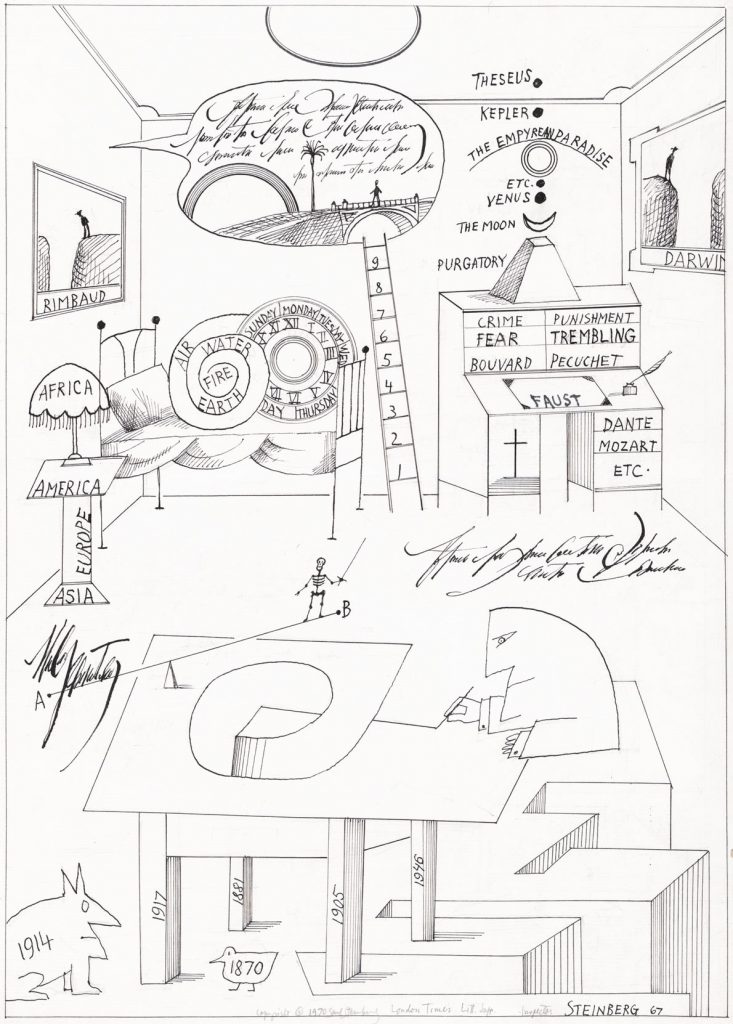
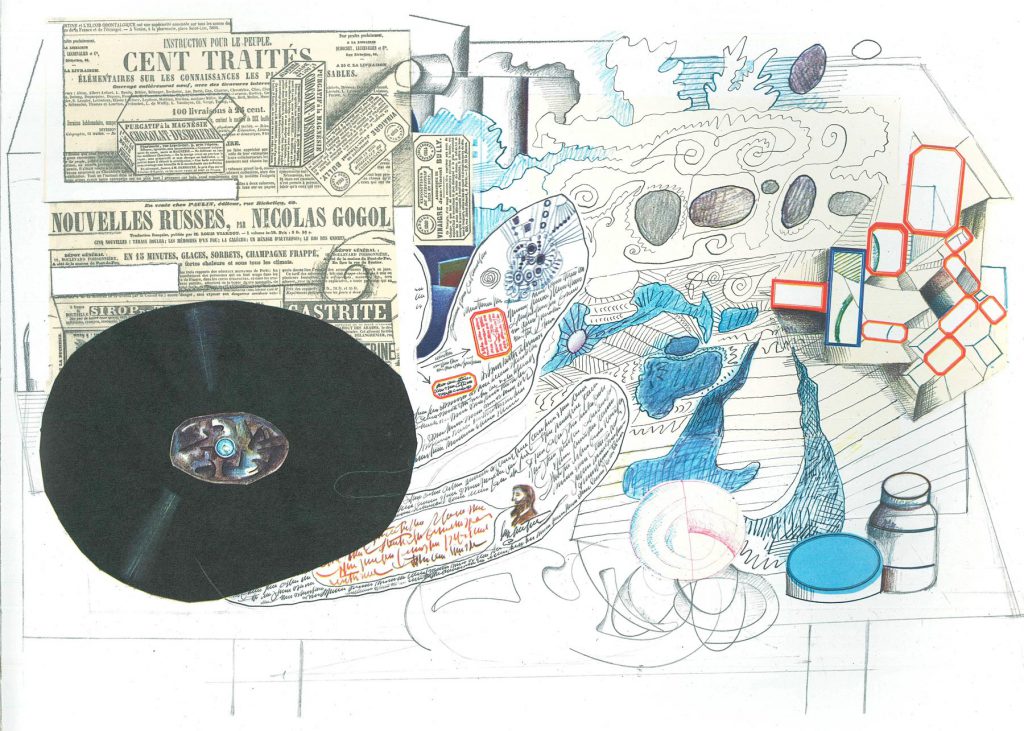
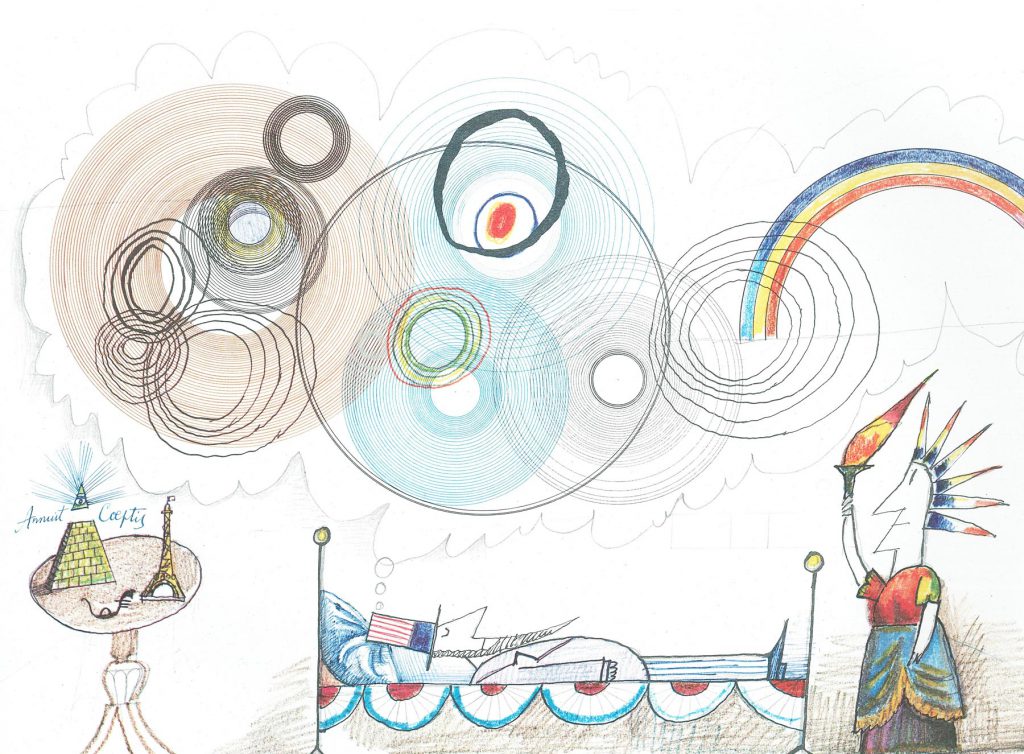
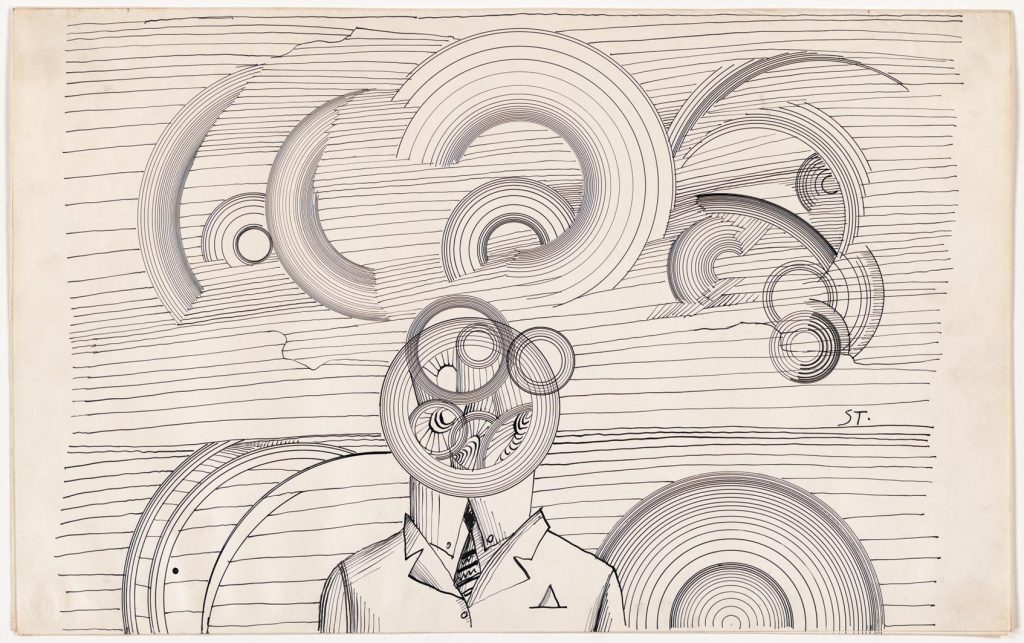
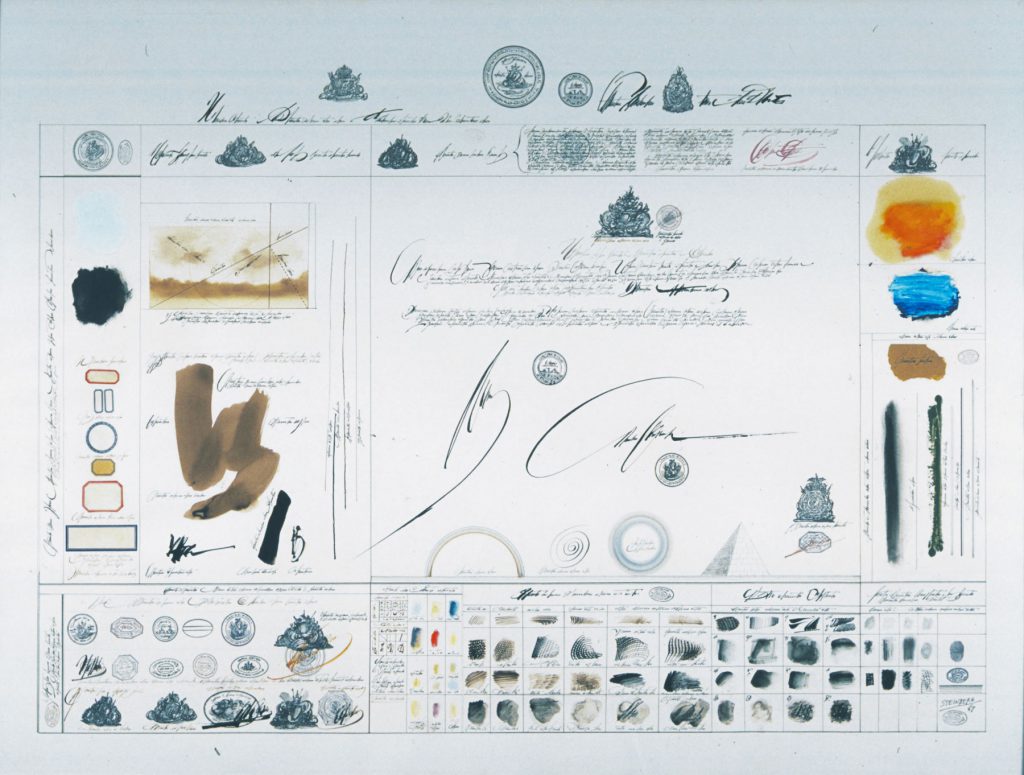
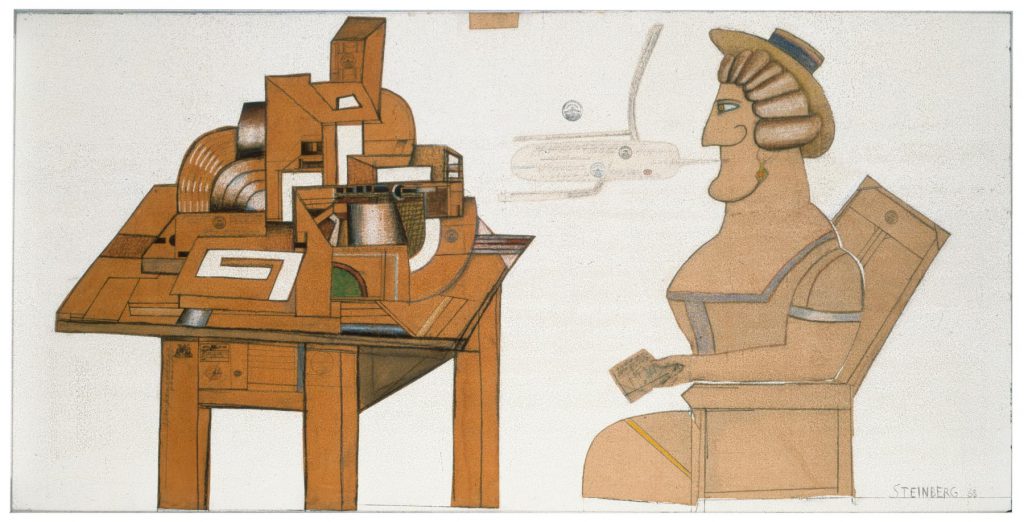
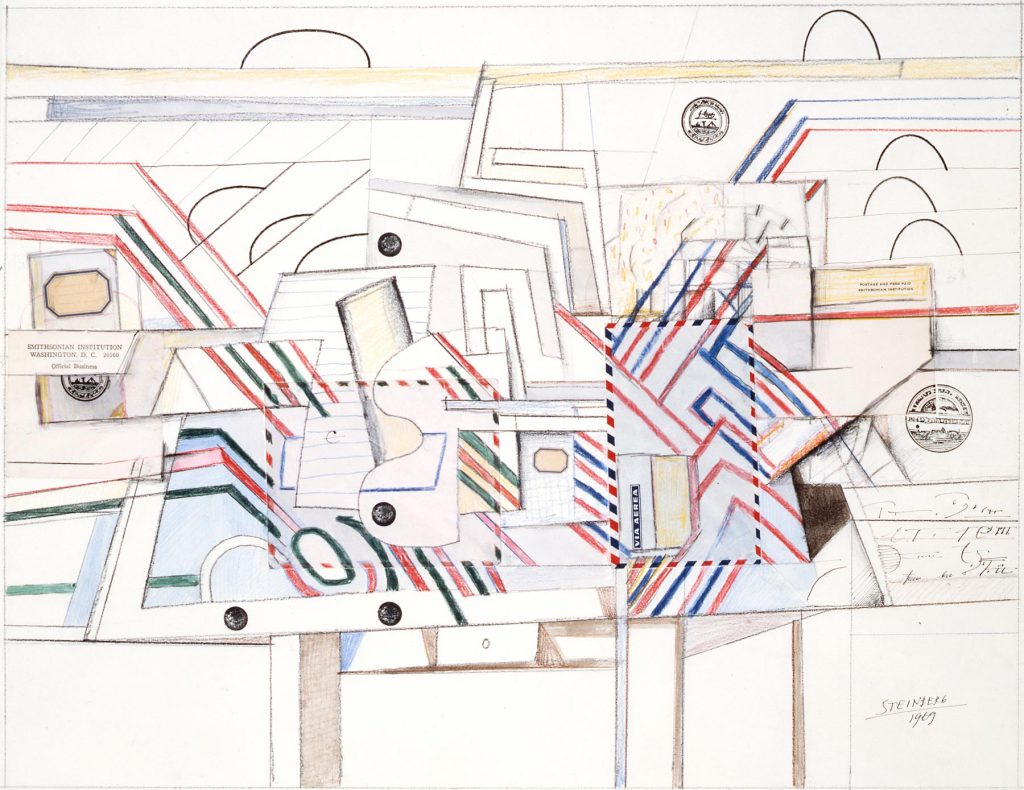
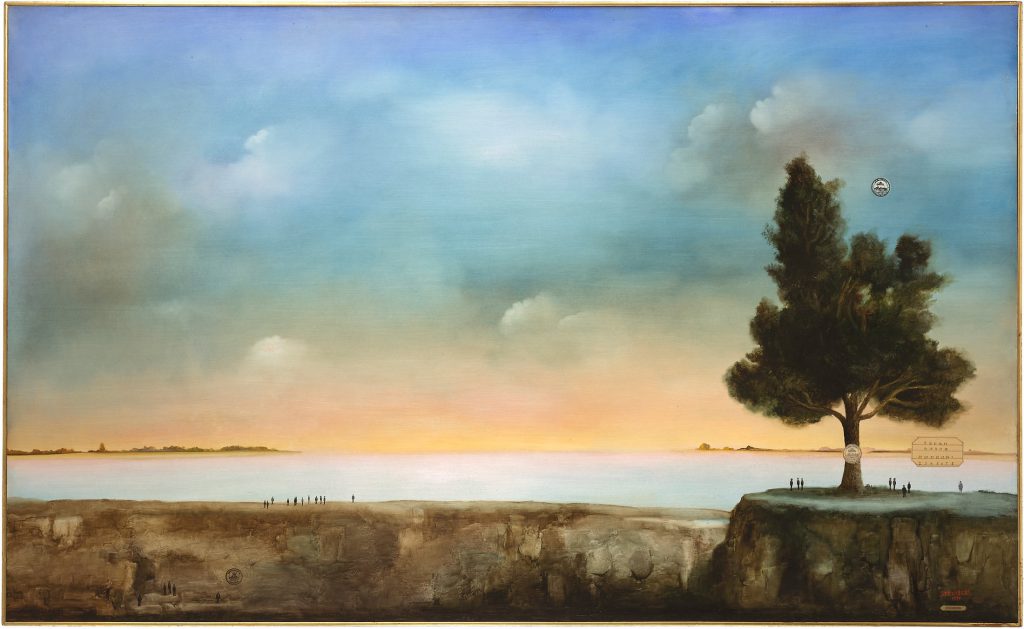
In one of his rare explanations of a specific work, Steinberg said of the 1966 drawing Inventory:
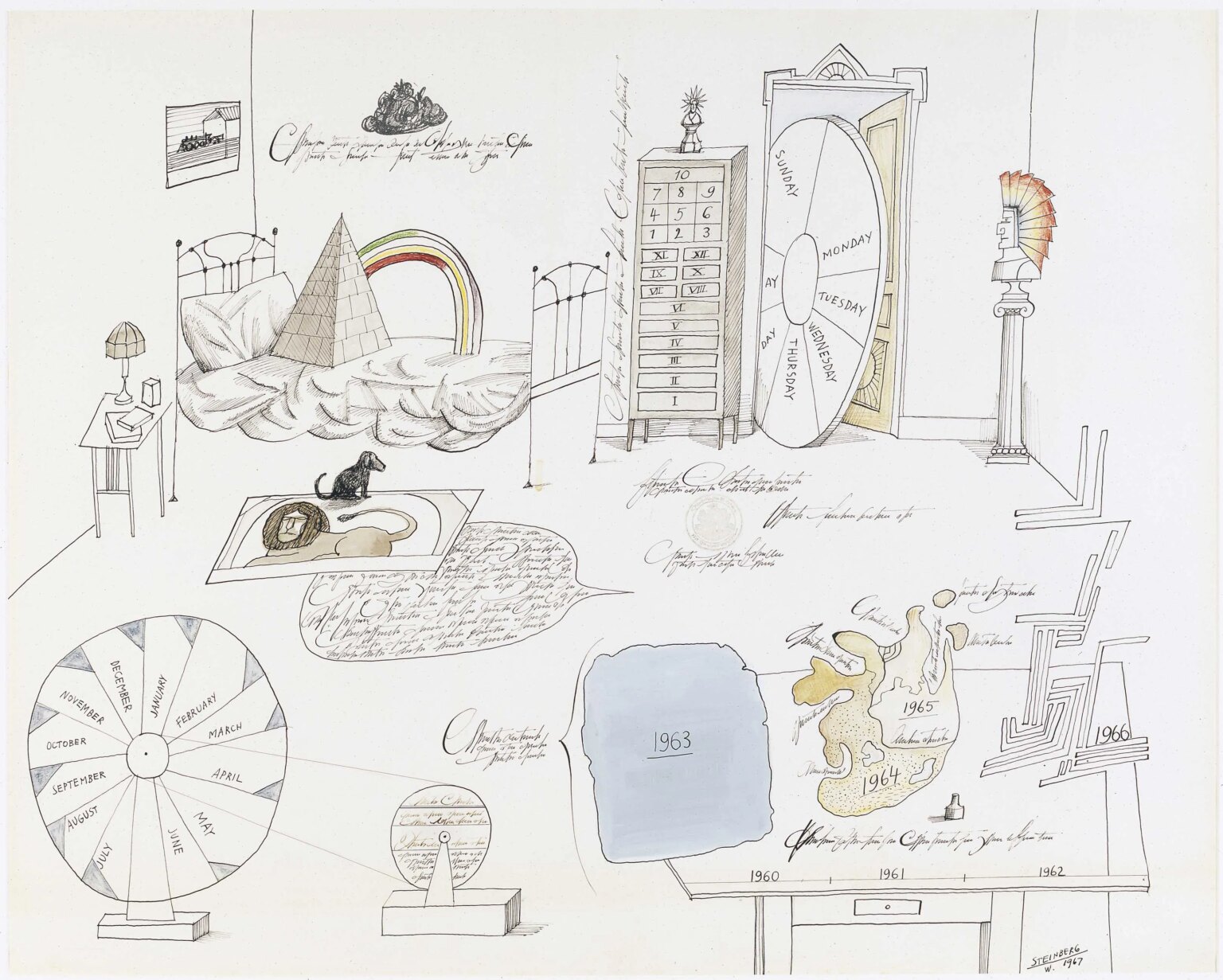
“[It] represents a room that contains the inventory of one’s knowledge, a certain inventory at a certain moment: furniture, a bed, an erotic bed, an affair going on between a pyramid and a rainbow. The bed represents history and these are symbols which are gone to history. This constant affair between the rainbow and the pyramid….They are both connected by the nearness of artificiality. The pyramid is the highest form of human achievement in architecture and the rainbow, still being nature, has something artificial about it. So it looks like it’s man-made. This nearness between these two things makes them be in bed together….There is always company,… there is no moment when one is alone. One carries the suitcases that [are]… one’s past. One’s life, one’s knowledge…. I can’t draw abstractions, I have to make drawings of things I know. I know these cabinets….This is how a day, or life, goes. It’s the accumulation of materials that we have, and this is our luggage: time and space and history and geography. And this is our own life.”43